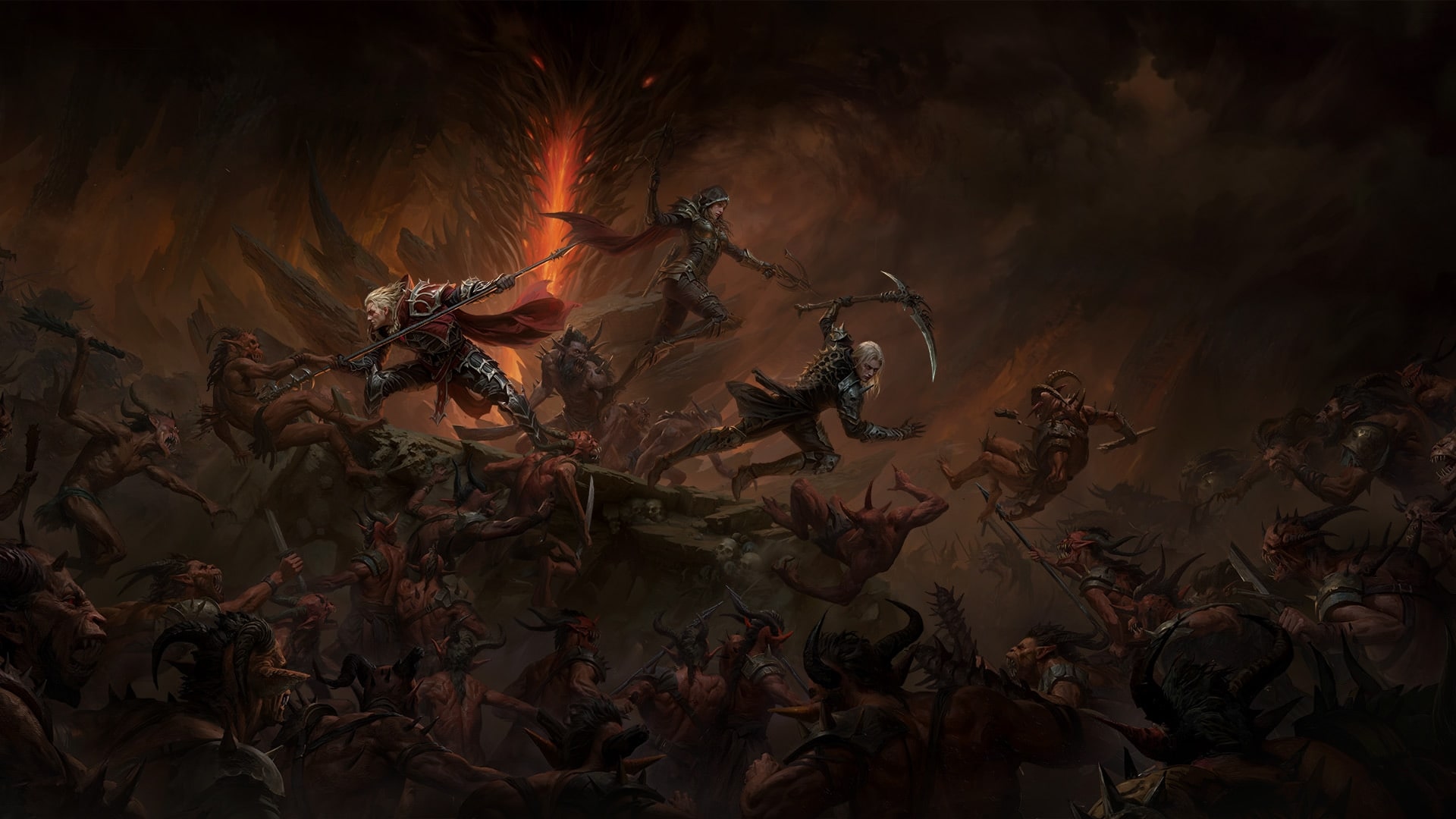Exploring the Enduring Legacy of the Diablo Series

Why Is Diablo Popular?
The Diablo series, developed by Blizzard Entertainment, has been a cornerstone in the action role-playing game (ARPG) genre since its inception in 1996. The franchise’s popularity can be attributed to several key factors:
- Addictive Gameplay: Diablo introduced a fast-paced, hack-and-slash style of combat combined with dungeon crawling and loot collecting. The randomized levels and items ensured that each playthrough offered a new experience, keeping players engaged for hours.
- Dark and Immersive Atmosphere: The game’s gothic aesthetic and haunting soundtrack create an immersive world that draws players into its dark fantasy setting. The themes of good versus evil, set against the backdrop of a world plagued by demons, resonate deeply with fans of the genre.
- Multiplayer Experience: Diablo’s multiplayer capabilities allow players to team up with friends or other online players to tackle challenging dungeons and bosses. This cooperative aspect enhances the replayability and social appeal of the game.
- Continuous Evolution: With each installment—Diablo II, Diablo III, and the recent Diablo IV—the series has evolved, introducing new classes, skills, and gameplay mechanics while retaining the core elements that fans love.
- Strong Community and Support: Blizzard’s ongoing support through updates, expansions, and events has fostered a loyal community. Player feedback often influences game updates, creating a sense of shared ownership and commitment to the game’s success.
The combination of these elements has solidified Diablo’s status as a beloved franchise in the gaming world, appealing to both longtime fans and newcomers alike.
Is Diablo Free on PC?
As of October 2023, the main titles in the Diablo series—Diablo II: Resurrected, Diablo III, and Diablo IV—are not free on PC. These games are premium titles that require a one-time purchase to play. Each game is available for purchase through Blizzard’s official platform, Battle.net, or authorized retailers.
-
Understanding the Stock Market: A Comprehensive Guide

- How Hashing Secures Blockchain Technology: Role, Algorithms, and Security Benefits
- Sony WH-1000XM5 Headphones Steal the Spotlight with 32% Discount Before Labor Day
-
Finnish Researchers Develop Eco-Friendly Method to Extract Silver Using Kitchen Ingredients

However, there is a free-to-play title in the Diablo franchise called Diablo Immortal. Released on June 2, 2022, Diablo Immortal is available on mobile devices (iOS and Android) and PC as an open beta. The game adopts a free-to-play model with optional in-game purchases. Players can download it for free and experience a substantial amount of content without spending money.
It’s important to exercise caution when searching for free versions of Diablo games on the internet. Unauthorized downloads or pirated copies are illegal and may pose security risks, such as malware or viruses. To ensure a safe and legitimate gaming experience, it’s recommended to obtain the games through official channels.
Is Diablo Still a Good Game?
The Diablo series continues to be highly regarded in the gaming community. Each installment has built upon its predecessors, refining gameplay mechanics and expanding the game’s universe. Here’s why Diablo remains a strong contender in the ARPG genre:
- Engaging Gameplay Mechanics: The core gameplay loop of battling hordes of enemies, collecting loot, and customizing character builds remains satisfying and addictive.
- Modern Enhancements: Recent titles like Diablo II: Resurrected offer updated graphics and quality-of-life improvements that make the classic games accessible to modern audiences without losing their original charm.
- Community and Seasonal Content: Diablo III introduced seasonal events and ladders, providing fresh content and challenges that keep the game engaging over the long term.
- Diablo IV’s Innovations: Diablo IV, released in June 2023, has been praised for its open-world design, darker tone reminiscent of the original games, and new features like player versus player (PvP) zones and enhanced character customization.
- Cross-Platform Availability: With games available on PC and consoles, and Diablo Immortal on mobile devices, the series reaches a broad audience, allowing players to enjoy the game on their preferred platform.
While individual opinions may vary, the consensus among critics and players is that Diablo remains a high-quality series that continues to deliver enjoyable experiences. Whether you’re a veteran player or new to the series, Diablo offers rich content that stands the test of time.
What Is the Plot of the Diablo Games?
The Diablo series is set in the dark, gothic world of Sanctuary, a realm caught in the eternal conflict between the forces of Heaven and Hell. The overarching narrative revolves around the battle against the Prime Evils—Diablo, Mephisto, and Baal—and their attempts to corrupt and dominate Sanctuary.
Diablo (1996)
The original game introduces players to the town of Tristram, which is plagued by demonic forces emanating from the depths of the cathedral. The player’s hero descends into the labyrinth beneath the church to confront Diablo, the Lord of Terror. The game ends with the hero defeating Diablo but at a great personal cost, setting the stage for future events.
Diablo II (2000) and Lord of Destruction Expansion
Diablo II continues the story shortly after the first game’s conclusion. The hero from the first game has become corrupted by Diablo’s essence. Players pursue this Dark Wanderer across Sanctuary, battling the Prime Evils:
- Act I: The pursuit begins in the Rogue Encampment, facing off against Andariel, the Maiden of Anguish.
- Act II: In the desert city of Lut Gholein, players confront Duriel, the Lord of Pain, and search for the Tomb of Tal Rasha.
- Act III: The journey leads to Kurast, where Mephisto, the Lord of Hatred, is gathering power.
- Act IV: Players venture into Hell itself to battle Diablo.
- Act V (Lord of Destruction): The expansion introduces Baal, the Lord of Destruction, who assaults Mount Arreat to corrupt the Worldstone, a powerful artifact that could doom Sanctuary.
The heroes ultimately defeat the Prime Evils, but not without significant consequences for the world’s balance.
Diablo III (2012) and Reaper of Souls Expansion
Set 20 years after Diablo II, Diablo III begins with a mysterious star falling in Tristram, signaling the return of evil forces. Players investigate this omen and uncover a plot involving:
- The Black Soulstone: An artifact capable of trapping the souls of the seven Evils.
- Leah and Adria: Key characters whose actions inadvertently lead to Diablo’s resurrection.
- Diablo’s Return: Diablo absorbs the souls of all Evils to become the Prime Evil and assaults the High Heavens.
In the Reaper of Souls expansion, Malthael, the former Archangel of Wisdom turned Angel of Death, seeks to end the eternal conflict by eradicating humanity, believing that it will stop the cycle of war between Heaven and Hell. Players must stop Malthael to save Sanctuary.
Diablo IV (2023)
Diablo IV introduces a new threat in the form of Lilith, the Daughter of Hatred and mother of humanity. Summoned into Sanctuary, Lilith aims to exert her influence and reshape the world according to her vision. The game explores themes of temptation, free will, and the blurred lines between good and evil.
Players traverse a vast open world, encountering factions and characters that are impacted by Lilith’s return. The story delves into the origins of Sanctuary, the motivations of angels and demons, and the role of humanity caught in between.
The narrative across the Diablo series is rich and complex, filled with lore that enhances the dark atmosphere of the games. Each installment builds upon the last, weaving a tale of sacrifice, corruption, and the enduring struggle against malevolent forces.
The Diablo series has left an indelible mark on the gaming industry, influencing countless other titles and establishing itself as a benchmark for ARPGs. Its blend of engaging gameplay, atmospheric storytelling, and continuous evolution ensures that it remains relevant and beloved. Whether you’re drawn to its dark fantasy world, the thrill of loot hunting, or the deep lore, Diablo offers a compelling experience that continues to captivate players around the globe.
